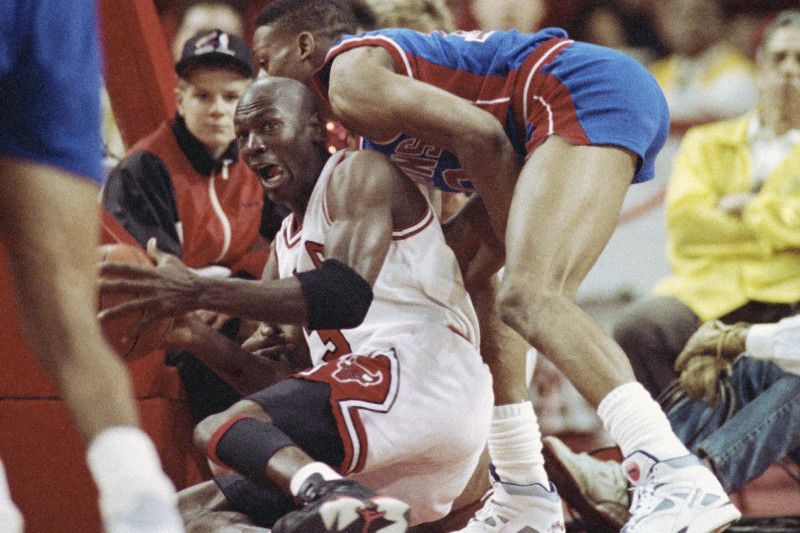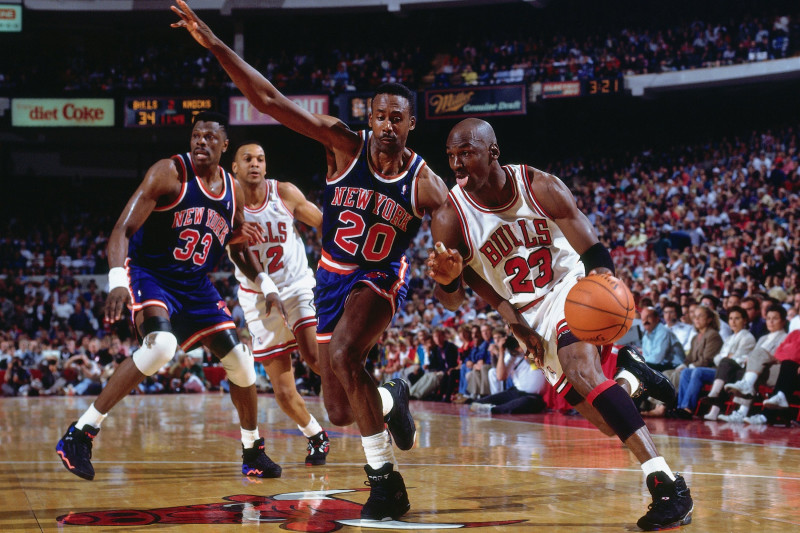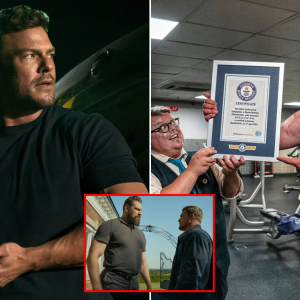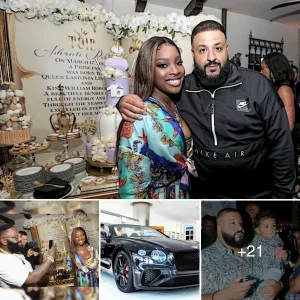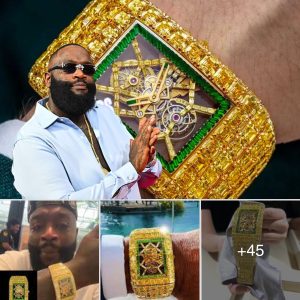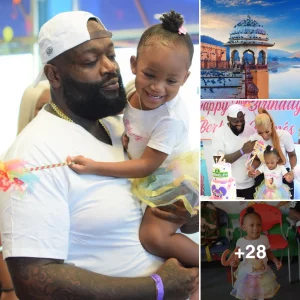HOW MICHAEL JORDAN BROKE ‘THE JORDAN RULES’
The only thing standing between MJ and his dynastic reign was a Pistons team focused on stopping him any way it could, until he transformed his game to overcome their Bad Boy ways.
For the last month or so, the most eye-catching sports highlights on TV have been those from 30 years ago, showing the low blows Michael Jordan suffered at the hands—and elbows, hips, forearms and knees—of the Detroit Pistons. Three consecutive postseasons Jordan and the Bulls faced the Pistons, and three consecutive postseasons the Bad Boys, as the Pistons were known, recognized they couldn’t stop Air Jordan from taking flight, but they could decide when he landed. And how.
After falling short (literally and figuratively) to those Pistons again and again and again, Jordan decided to ground himself, and that’s when everything changed—for Jordan, the Bulls and the NBA.
The Pistons referred to their strategy as “The Jordan Rules,” apparently believing that “Goonery” was too indelicate. “The Jordan Rules by the Pistons were all about not letting him get to the basket,” says former Bulls center Will Perdue, who played in the last two of those futile Pistons series. “Nobody could stay in front of him, so his man, usually Joe Dumars, would try to make him go a certain direction, usually toward the baseline. A second defender would run at him with their hands up as if they were making a play on the ball, except they’d literally run through Michael’s body. John Salley or Dennis Rodman would get a running start and just take him out.”
While repeatedly getting knocked down never knocked Jordan out with an injury, the energy to pick himself up, along with his insatiable hunger to prove the tactic couldn’t stop him, had a cumulative effect. It left him drained, both at the end of games and the end of the series.
“I don’t think [Pistons coach] Chuck Daly wanted to hurt him,” Perdue says. “He was just looking to wear him out.”
After losing in seven games to the Pistons in the 1990 Eastern Conference Finals, Jordan decided it was time to stop running headlong into a wall of Detroit big men—and, instead, make himself into a big man. Rather than drive from the perimeter and then take flight, leaving himself vulnerable to Detroit’s punishing tactics, he worked on catching the ball where he was a scoring threat without taking a dribble: on the low block near the basket. It was an unorthodox tactic to have a 6’6″, 198-pound shooting guard play that way, but it was possible because of the Bulls’ equal-opportunity Triangle offense, which was predicated on interchangeable players reading the defense and collectively recognizing its weak spot.
“The Triangle was the ultimate disguise because we never ran a play,” says point guard B.J. Armstrong, who arrived as a rookie for that seven-game loss to the Pistons and stuck around long enough to pick up three championship rings. “Once he figured out how to manipulate the defense, there was no denying him. He’d pick apart the game as he saw fit.”
First, though, Jordan had two items on his to-do list: Get stronger and perfect his post game.
“The Jordan Rules worked as long as Michael played a traditional way,” Armstrong says. “But he made an adjustment. … He figured out he had to catch the ball in position to score. So he learned to operate from the post and on the weak side and play the game with three dribbles or less. Now when he caught it, because his footwork was so good, he could score in a multitude of ways. He was skilled enough to adapt to any situation.
“He wasn’t just a jump shooter. He wasn’t just a post player. He could play every phase of the game. At both ends. He was as fundamentally sound and complete on defense as he was on offense. His thinking was, ‘Y’all want to get tough? Not only can I score on you, I can stop you.’ He could always adjust. [His opponent] couldn’t.”
Fitness trainer Tim Grover became part of the equation after reading an article about how the Pistons’ physicality was wearing Jordan down, physically and mentally. He contacted the Bulls and offered his services. Jordan gave him a 30-day trial, which turned into a career-long relationship.
“He trained exclusively with him by the time I got there,” says swingman Jud Buechler, who was part of the Bulls’ second three-peat. “It wasn’t that they were doing anything that far ahead of the curve; some guys are just built. Mike didn’t look like a bodybuilder, but the times I ended up on him in practice, it was no fun. He had this natural strength. Especially his core. From the waist down, he was a rock. You could not move him.”
To hone his back-to-the-basket game, Jordan spent the entire 1990-91 season dragging 6’10”, 230-pound rookie power forward Scott Williams onto the floor for post-practice one-on-one sessions with one rule: only post moves allowed.
“I probably played more one-on-one with Michael than anybody other than his brothers,” Williams says. “He always grabbed me after practice. We played free-throw line down. I beat him once. Well, I beat him and he called an offensive foul on me and then scored three straight to finish the game. He was relentless.”
The plan worked. On their fourth try, Jordan and the Bulls swept the Pistons in the Eastern Conference Finals and won the first of their six titles in the spring of ’91.
That didn’t stop other players from trying to physically intimidate Jordan, even if their tactics were far more subtle than the Pistons’.
“Guys would file their fingernails a certain way so they’d come to points, like claws, and just rake him,” Perdue says. “He’d look like he had jumped over a barbed wire fence and didn’t make it. There were marks all over his back, legs, arms. It was almost a badge of honor for him. ‘Look at what this guy tried to do to me,’ he said once.”
Not that Jordan wanted anyone to feel sorry for him; quite the opposite. He never wanted opponents to think they were good enough to affect him or his play. Winning the psychological battle was as important to Jordan as the physical one.
“He wanted to make things look effortless, like he wasn’t even working that hard,” Armstrong says. “That was part of the act. Because then people didn’t realize just how much energy he was expending. Even with the Bulls, he made it look like he just showed up. He’d walk in 25 minutes before practice. What most people didn’t know is he’d already worked out at his home gym, ate breakfast and played 18 holes of golf. MJ was a grinder at heart.”
Another part of the “act” required his teammates to play along. Perpetrators who knocked Jordan down with a hard foul weren’t to be confronted, lest that Bull should find Jordan in his face.
“He’d get mad at somebody going at somebody on his behalf, because he felt it was giving that person [who fouled him] too much credit,” Perdue says. “It was part of the mental game for him. He never wanted anyone to think any of it got to him.”
That extended to how he dealt with the referees. He certainly did his share of griping about missed calls, but he was calculated in how he did it.
Michael Jordan made it clear to his teammates that he didn’t want their help getting up off the floor no matter how many times the Pistons, or any other opponent, knocked him to the ground.John Swart/Associated Press/Associated Press
“He rarely barked at the referees,” says Steve Kerr, a guard on the Bulls’ second three-peat squads. “He would hold his jersey up near his mouth and make his point. He didn’t want anyone seeing that he was frustrated or angry.”
Jordan didn’t even want his teammates knowing if he was hurt in an effort to prevent that information from leaking and providing an opening for an opponent.
“Back then, if you knew a guy had a bad hand, you were going to find a way to whack it,” Perdue says. “He once got a really bad infection in the webbing between his toes. He had to be hospitalized. He kept the IV insertion needle taped to his arm. He’d have the IV in until we practiced, unhook it and practice, and then go back to the hospital. Other than that, though, you never saw him getting treatment. I have very few images of him sitting on the training table, other than getting his ankles taped. I’m sure he did [get treated], but it wasn’t around us. It was almost like all the info on MJ was off-limits. He didn’t want anybody knowing stuff like that.”
Jordan recognized, though, that he needed his teammates to be equally tough. If he envisioned needing you to play an important role at some point, however small, he was going to find out what you were made of long before the moment of truth. Small forward Scott Burrell’s successful navigation of Jordan’s gauntlet of fire during the 1997-98 season is covered in ESPN’s 10-part documentary, The Last Dance, on that season’s march to a sixth and final championship for Jordan, but there are others who couldn’t. Dennis Hopson was Burrell, six years earlier—a scoring wing off the bench who was consistently matched up with Jordan in practice.
“It ruined Dennis Hopson,” Williams says. “Every drill, five-on-five, three-on-three, Hopson had to take the abuse of Jordan. It was a mental beatdown. There was one day Hop went back at him and we ended up winning that scrimmage. We picked up Hopson and carried him to the locker room as if we’d just won a championship. But next day, it was more of the same.” Hopson, the third pick of the 1987 draft, was traded two games into the next season to the Sacramento Kings. It was his fifth and last.
Jordan didn’t have to tell management when a guy didn’t meet his standard, either. They did it themselves. “He made it so guys were rushing to their agents saying, ‘You have to move me,'” Buechler says.
The standard reached a new level when Jordan returned from a 21-month hiatus to try his hand at baseball and mourn the murder of his father, James. Everyone in the league, including inside the Bulls locker room, reacted akin to gazelles catching sight of a lion. But for those who could cut it, the chance to play with a living legend superseded any trepidation.
Buechler remembers walking into the Bulls locker room before Jordan’s first practice back and sensing something different.
“What’s going on?” Buechler, who had yet to play with Jordan, asked Ron Harper, who had his head down tying his shoe. Harper looked up and said, “The Man’s here.”
Jordan often would probe an opponent’s defense early in a game in an attempt to plot a countermove later in the same game.Nathaniel S. Butler/Getty Images
In that day’s scrimmage, Buechler was on Jordan’s squad, received a pass from him on a fast break and nailed a three-pointer. “He stuck out that big mitt to give me five and I thought, ‘My career is done, I am going to run out of the building and go home because this is as good as it gets,'” Buechler recalls. “His aura was larger than life.”
That carried over to opponents.
The New York Knicks and Indiana Pacers replaced the Pistons as teams in the East that tried to get physical with Jordan, but at that point, Jordan knew what he needed, both from himself and those around him, to claim another title. After being bounced in the second round of the ’95 playoffs by the Orlando Magic, he went to work once more sharpening the Bulls’ collective championship mettle. The ’95-96 training camp “was a war every day,” says Kerr and included an incident when an exchange of trash talk resulted in Jordan punching Kerr in the eye. Although Jordan says he later apologized, Kerr doesn’t think it happened by accident.
“It was a test, for sure,” Kerr says. “He wanted to know he could count on you. The Knicks, in particular, would not double him for three quarters and then in the fourth they would, to challenge the role players to make a shot and make a big shot.”
What Pat Riley and the Knicks understood is that if you showed Jordan your strategy early, he’d have a counter devised before the night was over. “He’d say, ‘B.J., let’s find out what they’re going to do and then I’ll make our adjustments after halftime,'” Armstrong recalls. “He’d attack double-teams twice in one possession just to see what the defense did. He’d goad them into thinking they had him covered. But he was saving it all for the last four minutes. Then he was going to force whoever we were playing to be perfect those last four minutes. No misreads.”
Of course, there were those who still tried to physically intimidate Jordan, mainly because there weren’t too many other ways to beat him. Former center Olden Polynice—traded to Seattle by the Bulls for the rights to Scottie Pippen in a 1987 draft night deal—earned an ejection after hammering Jordan on a drive to the basket.
“We couldn’t stop him the traditional way, so we had to do whatever we had to do,” Polynice says. That incident allowed Polynice to discover just how revered Jordan had become.
“I would call my mom after every game and I did that night, too,” he says. “First thing she says is, ‘Why did you hit Michael?’ I said, ‘Wait a minute, I’m your son.’ She said, ‘Yeah. But that’s Michael.’ That’s how big he was.”
Or that’s how big he became. First, literally, by becoming a big man in a 6’6″ shooting guard’s body. And then by becoming the psychological monster in every player’s mind.
“When you look into a man’s eyes and see no fear, that’s a different look,” Armstrong says. “That’s what you saw in his. It was a look that said, ‘I’m the baddest one here. I know it and you know it.



